| Recent Featured Videos and Articles | Eastern “Orthodoxy” Refuted | How To Avoid Sin | The Antichrist Identified! | What Fake Christians Get Wrong About Ephesians | Why So Many Can't Believe | “Magicians” Prove A Spiritual World Exists | Amazing Evidence For God | News Links |
| Vatican II “Catholic” Church Exposed | Steps To Convert | Outside The Church There Is No Salvation | E-Exchanges | The Holy Rosary | Padre Pio | Traditional Catholic Issues And Groups | Help Save Souls: Donate |  |
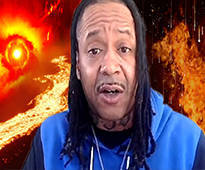
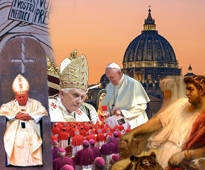
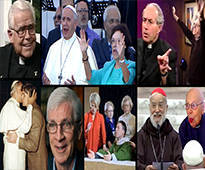
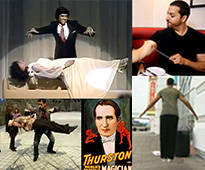
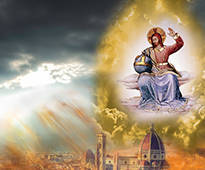

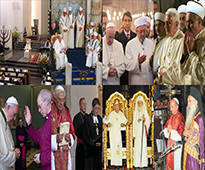


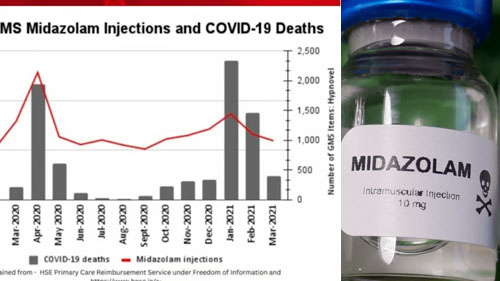 " />
" /> " />
" />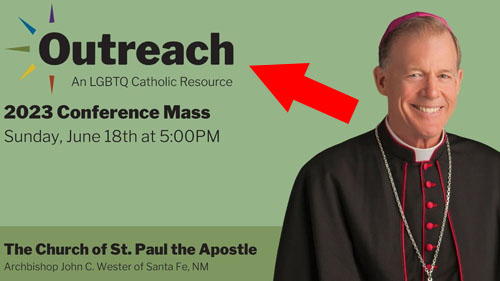 " />
" /> " />
" /> " />
" />




The Biblical Basis for Praying to Mary and for Catholic Teaching on Mary
The Blessed Virgin Mary is the mother of Jesus Christ. Contrary to the claims of some, the Catholic Church does not teach and has never taught that Mary is God. That would be heresy. Mary is just a creature, but the greatest of all the human beings ever created by God. Please look at this biblical evidence for the Catholic teachings about Mary, and why it’s so necessary to understand her role and importance.
To understand the Bible and what it teaches about Mary (the mother of Jesus Christ), one must understand Biblical types.
Type = a true event, person or institution in the Old Testament which foreshadows or prefigures something in the New Testament.
THE BIBLE TEACHES THAT ADAM, THE FIRST MAN, WAS A TYPE OF JESUS CHRIST
Jesus Christ was true God and true man. Adam was only a man, the first man. However, the Bible says that Adam was a type of the one who was to come, Jesus Christ.
How was Adam a type of Jesus? It’s perhaps best summed up in this passage.
Adam plunged the world into sin; Christ came to redeem the world from Adam’s sin. Adam sinned by his disobedience at the tree of the knowledge of good and evil; Christ redeemed the world by His obedience and sacrifice on the tree of the Cross. That’s why the Bible says that Christ is the new or second or last Adam. He came to undo what Adam did. He became the head of the new and redeemed race of those who supernaturally live in Christ, whereas Adam, the first man, was the head of humanity which fell into sin.
THE BIBLE TEACHES THAT JESUS CHRIST IS THE SECOND ADAM
There are many biblical types. Keep in mind that all of these events, persons and things were real events, persons and things which also prefigured something that would come later. Here are a few examples:
Many other examples of biblical types could be given. It’s important to understand that the fulfillment of a type (called an “antitype”) is greater than the type. Jesus Christ is infinitely greater than Adam; the New Testament is greater than the Old; the Resurrection is greater than the travails of Jonas; etc. With that in mind, we must now consider types of Mary, the mother of Jesus Christ. There are many types of Mary. In addition to other biblical evidence, these types provide undeniable biblical proof for Catholic teachings about Mary. The following points will undoubtedly be new and surprising to many non-Catholics.
AS CHRIST IS THE NEW ADAM, MARY IS THE NEW EVE
As mentioned already, Adam was a type of Jesus Christ. There was a distinct woman who was involved with Adam, the first man, in the downfall of the world into sin. That was Eve, the first woman. It was Adam’s transgression which constituted the original sin. But Eve was instrumental and inextricably bound up with the events leading up to the original sin. The woman (Eve) sinned and was the occasion for Adam to sin.
Just as “the woman” (Eve) was intimately involved in the events leading up to the original sin, there is a distinct woman who was intimately involved in the events leading up to the Redemption. That is Mary, the mother of Jesus Christ. She is the new Eve.
There are numerous clear parallels in the Bible between Eve and Mary. These demonstrate that Mary is the new Eve, as Christ is the new Adam.
EVE COMMUNICATED WITH, BELIEVED AND OBEYED A FALLEN ANGEL
(THE SERPENT) –
MARY COMMUNICATED WITH, BELIEVED AND OBEYED A GOOD ANGEL (GABRIEL)
Eve was approached by the serpent (the Devil), a fallen angel. Eve believed his lying words and disobeyed God. Eve sinned and caused her husband to sin, plunging the world into death.
Mary was approached by Gabriel, a good angel. Mary believed his message of salvation: that she was blessed among women, full of grace, and would bring forth the Savior. Mary obeyed God. By her obedience, she consented to the conception of Jesus Christ in her womb, and enabled Him to come and redeem the world from Adam’s sin.
Even in the very ancient Church, these biblical parallels were recognized as identifications of Mary as the new Eve, just as Christ is the new Adam. St. Irenaeus was a famous apostolic father from the second century. He contrasts the first Eve with the second Eve (Mary).
EVE WAS THE MOTHER OF ALL THE LIVING –
MARY, AS MOTHER OF JESUS, IS THE MOTHER OF ALL THE LIVING AND EVEN OF LIFE ITSELF
Eve was called the “mother of all the living” because all who had life descended from her. Mary is also the mother of all the living, but indeed in a greater way. Mary is the mother of Jesus Christ, who is Life itself and in whom all life is to be found.
Jesus is the Life. Mary is, therefore, literally the mother of Life itself. The parallel to Eve, the mother of all the living, is clear. The difference is that Mary is the mother of a Life that is infinitely greater than human existence. Those who live and die in her Son have access to eternal life in Him and become new creatures.
The fulfillment (Mary as mother of all the living) is again greater than the type (Eve as mother of all the living).
EVE WAS CREATED WITHOUT ANY SIN –
THE NEW EVE, MARY, ALSO HAD TO BE CREATED WITHOUT ANY SIN (IMMACULATELY CONCEIVED)
We’ve seen that the Bible indicates that Mary is the new Eve. So the question is: in what state was the soul of Eve created? Eve was created in Genesis 2 free from all sin. The entire creation was perfect until the fall of mankind. Adam and Eve were both created in a state of original justice. They didn’t lose that state of original perfection, in which they were free from all sin, until the original sin in Genesis 3.
If God created the first woman (the first Eve) without any sin, then He could certainly create the second (and greater) Eve (the Blessed Virgin Mary) without any sin. That’s exactly what He did. He had to do so as a matter of proportion and justice because she would be the first member of the redeemed humanity.
DEFINITION OF THE IMMACULATE CONCEPTION
Some mistakenly think that the Immaculate Conception refers to the miraculous conception of Jesus in the womb of the Virgin Mary. That’s not correct. Jesus was indeed conceived without any sin in the womb of Mary, but the Immaculate Conception refers to the conception of Mary in the womb of her mother. From the very first instant of her creation, she was preserved from any stain of original sin, which every other member of the human race (except Jesus) inherits.
God preserved her without sin in view of the saving merits of Jesus Christ. It was done for Mary because she had to be the uncursed and pure vessel which would carry the all-holy God. In order to carry infinite holiness, Mary had to be holy from the first instant of her creation.
JESUS SAVED MARY IN A GREATER WAY
So, if Mary was preserved from the stain of the original sin, does that mean that she didn’t have a Savior? No. Mary answers that herself.
God saved Mary by preventing her from contracting original sin. Suppose that a man falls into a deep hole in the forest, but is pulled out by his friend. It is true to say that the friend saved the man. Now suppose a man sees a woman walking toward the deep hole, and catches her just before she falls in. He stops her from falling into the hole in the first place, so that she doesn’t get injured or dirty at all. Did he save the woman? Certainly he did. He saved her in a greater way, by preventing her from falling into the hole and suffering any of the harmful consequences.
That’s how God saved Mary. Jesus was her Savior in an even greater way, by preventing her from ever contracting original sin, and by preserving her from sin throughout her life. He did this for Mary, in view of her unique role. The sinlessness of Mary is indicated by numerous types in the Bible.
Some express disbelief at the notion that God would create someone completely free from sin. They are forgetting that God created the first man and woman without sin.
THE BIBLE TEACHES THAT MARY IS THE ARK OF THE NEW COVENANT
We will now see that the Bible without any doubt identifies Mary as the Ark of the New Testament. It identifies Mary as the New Testament counterpart to the Ark of the Old Testament. Mary is the new and greater fulfillment of what was prefigured by the Ark of the Old Testament. This information is some of the most important and revealing about Mary’s profound role.
Since it carried and represented the presence of God, the Ark of the Old Covenant/Testament was the holiest and most powerful thing on Earth outside of God Himself. The Ark of the Covenant was a sacred chest which contained the stone tablets of the Ten Commandments (Deuteronomy 10:5). The Ark also carried and represented the spiritual presence of God on Earth. When God spoke to Moses, it was from between the two cherubim which were on the Ark.
Let’s now look at how the Bible identifies Mary as the Ark of the New Covenant.
The Ark of the Old Covenant The Virgin Mary
Contained the written word of God (Deut. 10:5)
Contained the Word of God made flesh, Jesus (Jn. 1:1)
Jesus Christ is the Word of God made flesh (John 1:1). So, just as the Ark of the Old Covenant contained the written word of God, Mary (who is the Ark of the New Covenant) contained the Word of God made flesh.
The Ark of the Old Covenant The Virgin Mary
Was “overshadowed” by the power and presence of God (Exodus 40:34-35)
Was “overshadowed” by the power and presence of the Most High (Luke 1:35)
The tabernacle was constructed to contain the holy Ark (Exodus 40:2-3). When God would come down upon the tabernacle and the Ark to speak to Moses, we read in Exodus 40:34-35 that God’s glory cloud or visible presence (called the “Shekinah”) “overshadowed” it. The rare word which is used to describe how this unique presence of God would “overshadow” the Ark is episkiasei in the Greek translation of the Old Testament.
The very same word “episkiasei” is used in the Greek of the New Testament to describe how the presence of God will “overshadow” the Virgin Mary. The Bible uses this language only about the Ark and about Mary.
The clear implication is that the presence of God overshadows Mary and comes down upon her – since she is the New Ark – just as it overshadowed the Ark of the Old Covenant. This reveals that Mary, while just a creature and infinitely less than God, is the new Ark. She thus has a unique connection to God, a unique holiness, sanctification and power.
THE AMAZING EVIDENCE FROM 2 SAMUEL 6 AND LUKE 1 THAT MARY IS THE ARK OF THE NEW COVENANT
Consider the amazing parallels that Scripture gives us between what happened to the Ark of the Old Covenant in 2 Samuel 6 (2 Kings 6 in the Douay-Rheims Catholic Bible), and what happened to the Blessed Virgin Mary, the Ark of the New Covenant, in chapter 1 of Luke’s Gospel. 2 Samuel 6 is the most complete story in the Bible concerning the Ark of the Old Covenant. Luke 1 is the most complete story in the Bible concerning the Blessed Virgin Mary.
The Ark of the Old Covenant The Virgin Mary
2 Samuel 6:9 – “David feared the Lord that day and said, How can the ark of the Lord come to me?"
Luke 1:43 –"[Elizabeth said]: And how does this happen to me, that the mother of my Lord should come to me?"
David says: “How shall the Ark of the Lord come to me?” while Elizabeth asks how is it “that the mother of my Lord should come to me?” Elizabeth says the same thing to Mary that David said about the Ark because Mary is the Ark of the New Covenant. The only difference between the two statements is literally that “mother” is used where Ark was used. The Bible is telling us that the mother of the Lord = the Ark. This is confirmed without any doubt as we carry the story further.
David Leapt Before the Ark The Infant Leapt in the presence of Mary
2 Samuel 6:16 – “As the ark of the Lord was entering the City of David, Saul´s daughter Michal looked down through the window and saw King David leaping and dancing before the Lord…”
Luke 1:41-44 – "And it came to pass, that, when Elizabeth heard the salutation of Mary, the babe leaped in her womb; and Elisabeth was filled with the Holy Ghost… For at the moment the sound of your greeting reached my ears, the infant in my womb leaped for joy."
David leapt before the Ark, just as the infant in Elizabeth’s womb leapt before Mary (the new Ark).
The Ark stayed for three months Mary (the Ark) stayed for three months
2 Samuel 6:11 – “The ark of the Lord remained in the house of Obededom the Gittite for three months, and the Lord blessed Obededom and his whole house.”
Luke 1:56-57 – “Mary remained with her about three months and then returned to her home. Now Elizabeth's full time of being delivered was come, and she brought forth a son. “
In 2 Samuel 6, we read that the Ark stayed with Obededom the Gittite for three months. Likewise, in Luke 1, we read that Mary (the Ark of the New Covenant) stayed with Elizabeth for three months.
2 Samuel 6:11 also mentions that the Lord blessed Obededom and his house while the Ark was present. “Blessing” in Scripture frequently indicates fruitful offspring. In this fact we see another parallel to Luke 1 and Mary. For Luke 1:57 tells us that after Mary stayed with Elizabeth, the Lord blessed her and her house with the birth of a child, John the Baptist.
David set out to fetch the Ark from Judah This occurred when Mary (the Ark) went to Judah
2 Samuel 6:2 – “Then David and all the people who were with him set out for Baala of Judah to bring up from there the ark of God, which bears the name of the Lord of hosts enthroned above the cherubim.”
Luke 1:39-40 – “During those days Mary set out and traveled to the hill country in haste to a town of Judah, where she entered the house of Zechariah and greeted Elizabeth.”
As we read here, these incredible parallels occurred when David set out for the hill country of Judah to fetch the Ark (2 Samuel 6:2), and when Mary, the Ark of the New Covenant, went to the hill country of Judah (Luke 1:39).
The Book of Revelation (Apocalypse) also indicates that Mary is the Ark of the New Covenant
Revelation 11:19,12-1- “And the temple of God was opened in heaven, and there was seen in his temple the ark of his testament: and there were lightnings, and voices, and thunderings, and an earthquake, and great hail. [12:1] And there appeared a great wonder in heaven; a woman clothed with the sun, and the moon under her feet, and upon her head a crown of twelve stars.”
The Bible was not written with any chapters or verses indicated. It wasn’t until the 12th century that the Bible was divided into chapters and verses. Therefore, the author of Revelation, St. John the Apostle, wrote what begins chapter 12 in one continuous stream immediately after what ends chapter 11. At the end of chapter 11, we read that the Ark of Jesus’ testament/covenant was seen in Heaven. The very next verse is Revelation 12:1. Therefore, the words which end chapter 11 flow immediately into the words which begin chapter 12, without any division.
That means that the appearance of the Ark of Jesus’ covenant at the very end of chapter 11 – “the ark of his testament was seen in his temple” (Rev. 11:19) – is immediately explained by the vision of “the woman” clothed with the sun which begins chapter twelve, the very next verse (Rev. 12:1). This indicates that “the woman” clothed with the sun, who bore the Divine Person in her womb (the Virgin Mary), is the Ark of the New Testament.
The Ark contained the manna from the desert Mary contained the manna from Heaven, Jesus
Hebrews 9:4- “… the ark of the covenant overlaid round about with gold, wherein was the golden pot that had manna, and Aaron's rod that budded, and the tables of the covenant.”
John 6:48-51- “I am that bread of life. Your fathers did eat manna in the wilderness, and are dead. This is the bread which cometh down from heaven, that a man may eat thereof, and not die. I am the living bread which came down from heaven… and the bread that I will give is my flesh, which I will give for the life of the world.”
There can be no doubt that the manna in the desert (Exodus 16) prefigured Jesus as the Bread of Life. Jesus makes a connection between the two in John chapter 6. He makes reference to the manna in the desert, and then says that His flesh is the true manna from Heaven. Well, the manna from the desert was placed inside the Ark of the Old Covenant. That prefigures Jesus Christ Himself (the true manna of the New Testament) being contained within Mary, the Mother of Jesus.
In Hebrews 9:4, we also see that the rod of Aaron was placed within the Ark of the Old Covenant. In Numbers 17, we read that this rod budded to prove the true high-priest. The rod of Aaron thus signified the true high-priest. In the New Testament, Jesus is described as the true high-priest.
Also see Hebrews 6:20, Hebrews 9:11, and other passages for more proof that Jesus is the true high-priest. The inescapable conclusion is that Aaron’s rod being placed within the Ark prefigured Jesus Christ, the true high-priest, being contained within Mary (the Ark of the New Covenant).
There is absolutely no doubt that the New Testament indicates that Mary is the Ark of the New Covenant. This evidence is undeniable.
SINCE MARY IS THE ARK OF THE NEW COVENANT, THAT MEANS THAT SHE IS THE MOST SACRED THING ON EARTH OUTSIDE OF JESUS CHRIST
The Ark of the Covenant was the holiest thing on Earth outside of the presence of God Himself. The Ark was contained in the tabernacle, within the holy of holies. The Ark’s presence is what made the holy of holies so sacred.
The Ark was so holy that when the people of God followed it they had to keep a respectful distance.
People who unlawfully touched the Ark were killed.
The men of Bethshemesh were killed because they had dared to look into the Ark.
We see how sacred God considered the object which was to come into close contact with His spiritual presence.
SINCE MARY IS THE NEW ARK, SHE HAD TO BE HOLY AND CREATED WITHOUT SIN
God gave the most precise specifications for the construction of the Ark. He ordered that it be made with the most pure gold.
It’s interesting that the Ark not only had to be overlaid with gold all around, but there is a specific reference to it having a “crown of gold round about.”
The Ark of the Old Covenant had a gold crown The Virgin Mary (the New Ark) also has a crown
Exodus 25:11- “And thou… shalt make upon it a crown of gold round about.”
Apocalypse 12:1- “And there appeared a great wonder in heaven; a woman clothed with the sun, and the moon under her feet, and upon her head a crown of twelve stars.”
The Ark of the Old Covenant had to be perfect and holy because it was the seat of God’s unique spiritual presence. God’s holiness could not be tarnished by contact with that which had defects. Likewise and to a greater degree, the Virgin Mary, as the new Ark and bearer of Jesus Christ, had to be created without sin and in a state of perfection.
She did not merely contain the spiritual presence of God, but Jesus Christ (God Himself). She did not merely contain the written word of God, but the Word of God made flesh (John 1:1). Consequently, Mary must be perfect. She must be free from all sin. She must be an ever-virgin and untouched by man.
If the Ark of the Old Covenant, which contained the written tables of the Law and was overshadowed by the spiritual presence of God, had to be overlaid with the most pure gold and had to be constructed according to the most precise specifications of God, how much greater is God’s construction of Mary, the Ark of the New Covenant? The fulfillment is greater than the type. Mary, the Ark of the New Covenant, must be and is greater than the Ark of the Old Covenant.
Just like the Ark of the Old Covenant, Mary must also have tremendous power over the Devil and God’s enemies. She must have a unique power of intercession with God, in bringing down His blessings and in aiding the people of God, just as the Ark of the Old Covenant did.
JUST LIKE THE ARK OF THE OLD COVENANT, MARY HAS A UNIQUE POWER OF INTERCESSION; SHE HAS AWESOME POWER OVER GOD’S ENEMIES, OVER THE DEVIL AND IN AIDING THE PEOPLE OF GOD
The Ark of the Old Covenant had awe-striking power. When it was taken by the Philistines, extraordinary things happened to them and to their false god, Dagon.
The Philistines began to be destroyed for having taken the Ark. This prompted them to return the Ark to their enemies, the Israelites.
The Ark struck mortal terror into the face of God’s enemies.
The waters of the Jordan were miraculously dried up by the Ark.
Mary, the New Ark, has this power and even more; for the fulfillment is greater than the type, and the New Testament is greater than the Old. We must now cover more biblical evidence for Catholic teachings on Mary.
THE EARTH FROM WHICH ADAM WAS CREATED IS A TYPE OF MARY AND HER PRESERVATION FROM SIN (HER IMMACULATE CONCEPTION)
We’ve established that Jesus Christ is the new Adam. Adam was formed from the Earth or ground.
The Hebrew word for “ground” is Adamah. It’s a feminine noun. Adam is so named because he came from the Adamah; his name means son of the ground, son of the Adamah. (This point was made by Gerry Matatics, Biblical Foundations International, Dunmore, PA.)
This point could be developed, but it’s clear that, on a certain level, the Earth from which Adam was created is a type of Mary. The first Adam was created by God from the ground, and the second Adam (Jesus Christ) took flesh from Mary, His mother. So the question is: what was the state of the Earth when it was created?
The Earth from which the first Adam was formed – and indeed the entirety of God’s creation before the fall – was completely uncursed, unfallen and perfect. Sin and curse had no place in it.
Mary, who gives birth to the second and greater Adam (Jesus Christ), must likewise be completely uncursed, unfallen and perfect. She must be preserved from all stain of sin and from the curse of original sin. That’s called the Immaculate Conception.
ONLY MARY AND HER SINLESSNESS COMPLETELY FULFILL WHAT IS PREDICTED IN GENESIS 3:15 –“I WILL PUT ENMITY BETWEEN THEE [THE SERPENT] AND THE WOMAN…”
Shortly after the fall of Adam and Eve, God makes this prophecy.
God says that there will be enmity – hostility, division, opposition – between the Devil and “the woman.” In the same context we read of the seed of the woman, and the victory which will be granted through the woman and her seed. In the Bible, a man’s children and descendants are spoken of as his seed. The seed of the woman, therefore, is something unique. It refers to a child which is produced by a woman alone. This obviously refers to the virginal conception and birth from the womb of the Blessed Virgin Mary, Jesus’ mother. The “seed” of the woman refers to Jesus Christ.
Therefore, the woman herein identified as having opposition or enmity with the serpent is clearly Mary, the mother of Jesus Christ. The woman is not Eve, who gave in to the serpent. It is Mary.
God says that He will put enmity or opposition between the serpent and the woman. As a result, Mary must be completely preserved from sin. For when one sins, one does not have opposition to the Devil, but rather gives in to the Devil. The only way the woman could have complete and definitive opposition to the serpent is by preservation from sin and from the sin of Adam.
The fact that Mary is this “woman,” and therefore completely free from the domination of sin and the Devil, is the reason that Jesus calls Mary “woman” throughout the New Testament. Jesus never calls His mother anything but “woman.” Many non-Catholics think this was Jesus’ way of belittling His mother and downplaying her role; on the contrary, Jesus was identifying Mary as the “woman” of Genesis 3:15.
Some superficial readings of John 2:3-5 have left people with the impression that Jesus is rebuking His mother at the wedding of Cana. However, it actually reveals the power of Mary’s intercession with Jesus. Jesus said that His hour had not yet come; in other words, it was not yet the time for Him to reveal His miraculous powers. It was His design to wait longer. Nevertheless, at the urging of His mother, who had compassion on the newly married couple, Jesus worked the miracle anyway. He worked this (His first) miracle at the urging of His mother, even though His hour “had not yet come.” This is an excellent example of how graces are obtained from Jesus through Mary – graces which He might not otherwise be inclined to give.
Many non-Catholics also object that if Mary is so crucial, why would Jesus allow the Gospel writers to perhaps give the impression that He was belittling the place of His mother? They contend that certain verses give that impression, or don’t do much to dispel that notion. The answer is that God does not cast pearls before swine (Matthew 7:6). He often slightly conceals His truths, or puts them just under the surface, so that superficial efforts or insincere people will pass over them or be left with the wrong impression. However, those who are more patient and dig deeper – or who simply trust the Church which Jesus established – will find the gem and the true meaning.
This is so very true in the case of the Bible’s teaching on Mary’s profound role. Superficial readings and insincere efforts will keep people blind to it. But it’s there in Scripture. Mary is the new Eve and the woman of Genesis 3:15, as we have seen. She is also the Ark of the New Covenant and much more, as we will see. It’s all there in the biblical typology and in many passages more deeply understood; but so many remain oblivious to it. Seeing they see not, and hearing they hear not. Having failed to trust the one Church which Christ established, they have sadly acquired only a shallow and misguided understanding of the Bible’s teaching.
Though other women were at the foot of the cross, Jesus singles out His mother. Jesus again calls her nothing other than “woman” because she is the woman of Genesis 3:15: the one in complete opposition to the serpent. Jesus also calls for St. John to take His mother for his own.
MARY’S SOUL MAGNIFIES THE LORD, AND THE ALMIGHTY HATH DONE GREAT THINGS TO HER
In Luke 1, we see a glimpse of the unique privileges that God has bestowed upon Mary.
The Bible says that Mary’s soul magnifies the Lord; it doesn’t diminish Him. Mary doesn’t detract from Jesus, but leads people to Jesus. The Ark of the Old Covenant signified God’s power and presence. When it was in their presence, it stirred them to devotion, to confidence, and to love of the Almighty. In a similar, but yet greater way, Mary, the new Ark, directs and centers us powerfully around Jesus Christ. Everything Mary has and everything Mary is comes from being the mother of Jesus Christ. He did great things to her by preserving her from sin.
One should also make a special note of Luke 1:48, in which Mary prophesies that “all generations shall call” her “blessed.” This is a prophecy about the Catholic prayer the Hail Mary. For generations Catholics have prayed: “Hail Mary, full of grace, the Lord is with thee, blessed art thou among women, and blessed is the fruit of thy womb, Jesus. Holy Mary, mother of God, pray for us sinners now and at the hour of our death. Amen.”
THE BIBLE SAYS THAT MARY IS “FULL OF GRACE,” WHICH MEANS WITHOUT SIN
Modern Protestant Bibles do not translate Luke 1:28 as “Hail, full of grace.” They have: “Rejoice highly favored daughter” or something similar. The Protestant translations are wrong. There are a number of simple ways to show that they are wrong. The word in the original Greek is kecharitomene. This word is directly concerned with the idea of "grace." Greek scholars point out that kecharitomene comes from the root word charis, which has a literal meaning of “grace.” Out of about 150 appearances, the King James (a Protestant Bible) translates charis as “grace” 129 times.
It’s also extremely important to note that early Protestant translations had Luke 1:28 as “full of grace” or the equivalent. Famous Protestant William Tyndale (1494-1536) is considered to be a hero among some Protestants. His version of the Bible was translated into early modern English around 1525. Tyndale translated Luke 1:28 as: “Hayle full of grace ye Lorde is with ye: blessed arte thou amonge wemen.” (http://wesley.nnu.edu/biblical_studies/tyndale/) The English Protestant Thomas Cranmer (1489-1556) also rendered the passage as “full of grace.”
St. Jerome (A.D. 347-420) was the biblical scholar of the ancient Church. Even the Protestant translators of the 1611 King James Bible called St. Jerome “a most learned father, and the best linguist without controversy, of his age, or of any that went before him” (From the Translators' Preface to the 1611 KJV). St. Jerome translated "kecharitomene" as "gratiae plena" meaning “full of grace which thou hast received" in the Latin Vulgate. “Grace” was also accepted as the proper translation in the Rheims New Testament in 1582.
The Word Pictures of the New Testament, by the famous Protestant Greek scholar A.T. Robertson, says this about Luke 1:28:
If Mary is “full of grace,” that in itself strongly suggests that she is without sin. For grace is in opposition to sin. The angel is not saying that Mary will become full of grace, but that he has encountered Mary already in that state. She was conceived in that state. Moreover, Mary is pronounced “blessed among women” because her position is unique.
MARY WAS A PERPETUAL VIRGIN
We’ve seen that Mary is the new Eve and the Ark of the New Covenant. Now we must look at the biblical evidence for Mary’s perpetual virginity. Most Protestants of our day reject the perpetual virginity of Mary; they think it contradicts the Bible. Many of them will be shocked to find out that the first Protestants, including Martin Luther, John Calvin, Huldrych Zwingli and others all believed in the perpetual virginity of Mary. The idea that Mary ceased to be a virgin and had other children besides Jesus was invented many generations after the original Protestant “reformation.” Thus, the Protestant position on this matter not only contradicts ancient Catholic tradition and the Bible (as we will see), but their own Protestant “tradition.”
MATTHEW 1:25 DOES NOT DISPROVE MARY’S PERPETUAL VIRGINITY
The first thing that Protestants usually quote against Mary’s perpetual virginity is Matthew 1:25.
According to Protestants, this proves that Mary ceased to be a virgin after the birth of Jesus. This is quite wrong. The Greek word for "until" or “till” (heos) does not imply that Joseph had marital relations with Mary after the birth of Jesus Christ. It simply means that they had no relations up to that point, without saying anything about what happened after that point. This is proven below by many passages. We should also bear in mind that the Bible was written several thousand years ago. It was written at a time and in languages which don’t express and imply things the same way that they would be expressed and implied in modern English.
For instance, in 2 Samuel 6:23 (2 Kings 6:23 in the Douay-Rheims Catholic Bible), we read that God cursed Michal, David’s wife. He cursed her because she mocked David for the manner in which he rejoiced before the Ark of the Covenant. As a result, Michal had no children “until” the day of her death.
Does this mean that Michal started having children after her death? Obviously it does not. This verse demonstrates that when Scripture describes something as being true “until” or “before” a certain point, it doesn’t necessarily mean that it ceased to be true after that point. Here are numerous other examples of this:
This refers to the Son of God. Does this mean that He will cease to sit at the right hand of the Father after God’s enemies are made His footstool? Obviously it does not. He will remain at the right hand of God the Father.
Does this mean that they should abandon reading and doctrine after he comes? Obviously it does not.
Does this mean that Paul necessarily ceased to have a good conscience after that day? Obviously it does not.
The preposition “before” can be used the same way.
Here we see that the word “before” can be used in a similar manner to the word “until.” This child did not die; Jesus healed him (John 4:50). Thus, the statement in Matthew 1:18, which is quoted below, that Mary was with child “before” she and Joseph came together, doesn’t mean that they came together after she was with child. It simply means that she was pregnant without any sexual contact.
It’s quite certain, therefore, that Matthew 1:25 and Matthew 1:18 do not contradict Mary’s perpetual virginity in any way. Protestants cannot legitimately claim that these passages constitute proof that Mary ceased to be a virgin. These passages do not prove her perpetual virginity, either. Her perpetual virginity is proven by other things in the Bible.
WHAT ABOUT THE “FIRSTBORN” SON – DOESN’T THAT IMPLY OTHER CHILDREN?
“Firstborn son” is a legal title given to a first-born male child in a Jewish family: in other words, it is given to a male child who is also the first child.
God specifically commanded the Israelites to sanctify (i.e., set apart) their first-born sons for a special consecration and service to God. The title “first-born son” held additional importance because it entitled that child to a double portion of the inheritance (Deut. 21:17). This title of “first-born son” was given to the child regardless of whether the woman had any other children after him. As an example: “we can see this from a Greek tomb inscription at Tel el Yaoudieh (cf."Biblica" 11, 1930 369-90) for a mother who died in childbirth: ‘In the pain of delivering my firstborn child, destiny brought me to the end of life.’” (Quoted in “Brothers and Sisters of Jesus,” by William Most)
In Exodus 13 and 34, we read about God’s prescription that the first-born be consecrated to Him. There was a ceremony for the “sanctification of the firstborn” (Exodus 13 and 34:20). It’s not as if they postponed the ceremony for the “first-born son” until after the woman had a second child.
Thus, the statement that Jesus was the “first-born son” of Mary (Luke 2:7) does not in any way contradict Mary’s perpetual virginity. It simply means that He was her first and male child. It says nothing about whether any came later.
WHAT ABOUT THE “BROTHERS” OF JESUS?
Non-Catholics often bring up the passages which mention the “brothers and sisters” of Jesus. First of all, it must be mentioned that never once are these “brothers” described as the children of Mary, Jesus’ mother.
In the original Greek the words used are adelphoi (“brethren”) and adelphe (“sisters”). The words adelphoi and adelphe can refer to actual siblings. However, the Bible also uses these words to describe people who are not brothers, but cousins or relatives or step brothers or close neighbors.
THE BIBLE SAYS THAT ABRAHAM WAS LOT’S BROTHER, BUT HE WASN’T LITERALLY
Lot was Abraham’s nephew. Abraham was his uncle (see Genesis 11:31; 14:12). Yet, the Bible twice describes Lot as Abraham’s “brother.” That’s because the word “brother” doesn’t necessarily mean a sibling. As stated above, it can mean a cousin or a relative or a step-brother or a close family friend.
Lot was Abraham’s nephew The Bible also calls him his “brother”
Gen.11:27- "Now these are the generations of Terah: Terah begat Abram, Nahor, and Haran; and Haran begat Lot."
Gen.12:5- "And Abram took Sarai his wife, and Lot his brother's son...."
Gen.14:12- "And they took Lot, Abram's brother's son, who dwelt in Sodom, and his goods, and departed."
Gen.14:14- "And when Abram heard that his brother [Lot] was taken captive ...."
Gen.14:16- "And also brought again his brother Lot...."
Some Protestants attempt to respond to this by arguing that the Old Testament was not written in Greek, but Hebrew. Therefore, they say, the case of Lot doesn’t prove that adelphos can refer to a person who is not literally a brother. This is refuted by pointing out that while the Old Testament was originally written in Hebrew, it was famously translated into Greek by seventy scholars a few centuries before the coming of Christ. This famous translation is called the Septuagint.
This Greek translation of the Old Testament, the Septuagint, is quoted about 300 times by the inspired writers of the New Testament. That means that the New Testament writers accepted the Septuagint. In the Septuagint, the same Greek word adelphos is used to describe Lot as Abraham’s brother. Adelphos is the singular form of adelphoi, the word used in the New Testament for the “brothers” of Jesus. Therefore, the Old Testament does use adelphos to describe someone who is not literally a brother.
But the point can also be proven from the New Testament. In Acts 3:17 and Romans 9:3, we see that adelphoi (brothers) is used to describe people of the same nationality who are not siblings. Consider these verses to be the death-blow to the Protestant argument in this regard.
Moreover, in Luke 10:29, Matthew 5:22 and Matthew 7:3, we see that adelphos (“brother”) is used for neighbor, not necessarily sibling.
BUT THERE IS A GREEK WORD FOR COUSIN, ANEPSIOS; IF THE BRETHREN OF JESUS WERE COUSINS, RATHER THAN BROTHERS, WHY WASN’T ANEPSIOS USED?
The Catholic Church teaches that Mary is ever-virgin and had no other children. The Catholic Church does not teach that all the “brethren” of Jesus were necessarily His cousins. They may have been extended relatives or close friends or people considered part of the family by marriage or law or homeland. For instance, in 2 Samuel 1:26, King David calls Jonathan his “brother.” Jonathan and David were not brothers or cousins. David had married Jonathan’s sister, Michal, the daughter of King Saul. So David married into the family.
The number of Jesus’ “brothers” (adelphoi) mentioned in the Bible seems to suggest that some of them were not even extended relatives, but considered part of the family in other ways. If even one or a few of them were not cousins, but more extended relatives or neighbors or close family friends, then the word adelphoi would have been used. Therefore, the fact that the word for cousin was not used does not in any way prove that Mary had other children.
EVIDENCE FROM MATTHEW 27:56 SHOWS THAT THE “BROTHERS” OF JESUS WERE NOT HIS SIBLINGS
James and Joses are two of the names given as “brothers” of Jesus. It can be shown, by the following points, that these were children of another woman and not siblings of Jesus. Please follow this carefully.
There were three women at the foot of the Cross: 1) the Blessed Virgin Mary (the mother of Jesus); 2) Mary the wife of Cleophas (who is said to be the Blessed Virgin Mary’s sister); and 3) Mary Magdalene.
Mary, the wife of Cleophas, is also described as “the other Mary” in Matthew 28:1. The Bible tells us that James and Joses are the children of this Mary:
Thus, James and Joses (who are called the “brothers” of Jesus) are not His siblings, but at least His cousins. However, they are probably not even first cousins. This is because Mary of Cleophas (the mother of James and Joses), who is said to be the “sister” of Jesus’ mother (John 19:25), is also named Mary. It’s extremely unlikely that two siblings in a Hebrew family would be given the same name. Most likely they were not sisters, but members of the same clan who were called “sisters” in the same way that James, Joses, Simon and Judas were called “brothers” of Jesus. All of this shows that none of the statements in the Bible about the brothers and sisters of Jesus disproves, in any way, the perpetual virginity of the Blessed Virgin Mary. Now we must look at the proof that Mary had no other children and that she was perpetually a virgin.
JOHN 19:26 PROVES THAT MARY HAD NO CHILDREN BESIDES JESUS
While dying on the Cross, Jesus entrusts His mother to the care of St. John the Apostle.
Scholars point out that this was a formal act of entrustment. (Gerry Matatics, Op. cit.) Jesus entrusted His mother to St. John so that he would take care of her. If Mary had other children, as Protestants contend, Jesus would not have told St. John to take Mary for his mother. She would have been put into the care of one of his many “brothers.” The fact that Jesus entrusted Mary to St. John proves that she had no other children.
Protestants try to respond to this by arguing that Jesus’ “brothers” were not believers and that’s why Jesus entrusted her to St. John. However, that’s refuted by Acts 1:14. It indicates that Jesus’ “brothers” were believers. Jesus certainly knew that they were or would become believers and hence He would not have entrusted her to St. John if they were His siblings.
It’s also quite significant that when Jesus was found in the temple at 12 years old, there is no indication whatsoever that Mary and Joseph had other children (Luke 2:41-51). The indication is that He is an only child. He is also referred to as “the son of Mary” (Mark 6:3), not as a son of Mary. Never once is Mary said to have had other children.
MARY’S RESPONSE TO THE ANGEL IN LUKE 1 INDICATES THAT SHE HAD TAKEN A VOW OF PERPETUAL VIRGINITY
The angel appears to Mary and tells her that she will conceive and bring forth a son. Mary responds by saying: “How shall this be, seeing I know not man?” The actual meaning is: how shall this be since I am a virgin. How shall this be? Mary understood how children were conceived. Her response only makes sense if she had taken a lifelong vow of virginity. She was asking how she could conceive while a virgin.
It should also be pointed out that Mary’s engagement to Joseph doesn’t contradict the notion that she had taken such a vow. Moral behavior at the time dictated that women committed to virginity have a male protector who would guard and respect the vow. That was Joseph’s role.
IT’S UNIMAGINABLE THAT THE ARK OF THE NEW COVENANT WOULD HAVE SEXUAL CONTACT
We’ve already seen that the Bible clearly teaches that Mary is the Ark of the New Covenant. As the holiest creature on Earth and the vessel of the Most High, it’s totally incongruous – completely out of keeping with the Ark’s dignity and role – to think that she would have any sexual contact. To prepare the people for God’s coming on Mt. Sinai, Moses said:
When David was on the run and needed bread from the priest, we read:
The Ark was created for a more sublime and sacred reason, and never would have sexual contact. Oza was struck dead for merely touching the Ark when he shouldn’t have done so (2 Samuel 6:6-8).
EZECHIEL 44 AND THE PROPHECY ABOUT THE CLOSED GATE IS A PROPHECY OF MARY’S PERPETUAL VIRGINITY
Here we see that the Lord shall pass through this gate, and no other man shall pass through it. This is a prophecy about the perpetual virginity of Mary. She is the closed gate, through whom the Lord comes. That’s one reason why Mary has been called “the Gate of Heaven” in traditional Catholic writings.
THE PERPETUAL VIRGINITY OF MARY WAS FIRMLY BELIEVED IN THE ANCIENT CHRISTIAN CHURCH
Some Protestants and most members of the “Orthodox” Church claim to honor the Second Council of Constantinople. It was the fifth ecumenical council. As we see here, it clearly taught Mary’s perpetual virginity.
The ancient Christian Church believed that Mary was perpetually a virgin. In the fourth century, St. Jerome, the father of biblical scholarship and the one who translated the Bible into Latin, defended this truth against Helveticus, a heretic who denied it. As mentioned already, even the first Protestants, including Luther, Calvin and Zwingli, accepted the perpetual virginity of Mary.
THE BIBLICAL EVIDENCE FOR MARY’S BODILY ASSUMPTION INTO HEAVEN AND HER QUEENSHIP IN HEAVEN
The Catholic Church teaches that, after her course of life on Earth, the Blessed Virgin Mary was assumed body and soul into Heaven. Her body did not remain in the grave and suffer corruption of the flesh; for this is a punishment for original sin, which she did not have. Since she was free from all original sin and was the privileged Ark, Mary was taken directly to Heaven, body and soul. That’s called the dogma of Mary’s Bodily Assumption.
Non-Catholics claim there is no evidence in the Bible for the Assumption of Mary. On the contrary, we find a description of it in Revelation/Apocalypse chapter 12
The woman in Revelation 12:1 signifies a number of things. The fathers of the Church understood it to signify the Mother of Jesus; they also understood it to signify, on a certain level, the Church. There is no doubt that it signifies Mary, for the Son of this woman is the one who rules all nations with an iron rod (Rev. 12:5). That’s Jesus, of course; and thus the mother must be the Virgin Mary. Therefore, Revelation chapter 12 provides us with a clear picture of Mary assumed into Heaven and placed as Queen of Heaven.
The Bible also gives us a glimpse of the Assumption of Mary in Psalm 132:8 (Psalm 131:8 in the Douay-Rheims Catholic Bible).
This interesting psalm speaks of the Lord and the Ark arising or being carried to a permanent resting place. This is an image of the Assumption; for Jesus is the Lord and Mary is the new Ark, as we’ve shown. Both of them are taken to Heaven, body and soul. Jesus ascends on His own; Mary is assumed by Jesus.
If the Ark of the Old Covenant is spoken of as being carried off to a resting place, how much more the Ark of the new and eternal covenant? We also see that the Ark is spoken of as sanctified.
THE ASSUMPTION OF MARY INTO HEAVEN FLOWS LOGICALLY FROM HER PRESERVATION FROM SIN
The bodily Assumption of Mary flows logically from her preservation from all original and actual sin. The corruption of the flesh in the grave is a consequence of original sin (Genesis 3:19). Most Protestants would agree on this point. As the Ark of the New Covenant, Mary did not have original sin. As a result, she was free from its consequences. It follows from this that God did not let her body see corruption.
This psalm, which speaks of God not allowing His holy one to see corruption, is quoted in the New Testament in Acts chapter 2. It refers to Jesus.
Likewise, because Mary was created free from all sin, she did not suffer any corruption of the flesh in the grave and was assumed body and soul into Heaven.
THE ARK WAS MADE OF INCORRUPTIBLE WOOD
The Ark of the Old Covenant was made of setim (or shittim) wood, an incorruptible acacia.
Setim wood is so extremely durable that the Septuagint, the Greek version of the Old Testament, actually translates this word as "incorruptible" or "nondecaying" wood. If the Ark of the Old Covenant was incorruptible, how much more must the Ark of the New Covenant be incorruptible. God specifically prescribed incorruptible wood for the construction of the Ark because it served as a prefigurement of the incorruptible body and soul of the new Ark, the Blessed Virgin.
MARY’S BODILY ASSUMPTION DOES NOT CONTRADICT BIBLICAL REALITIES
Some people consider it fanciful that Mary could have been miraculously assumed into Heaven, body and soul. However, the Bible tells us that Elijah was miraculously carried away to Heaven (2 Kings 2:1,11). We also read that Enoch was miraculously carried away to walk with God (Heb. 11:5; Gen. 5:24). It’s also clearly taught in the Bible – and is an article of the ancient Christian faith – that all men, whether good or evil, shall be miraculously reunited with their bodies at the final judgment, for the resurrection of the just and the reprobate (1 Cor. 15). Thus, it’s not in any way contrary to biblical realities – but rather corresponds precisely to them – to believe that Mary was assumed into Heaven because she was God’s perfect Ark and without sin.
THE BIBLE INDICATES THAT MARY IS THE “QUEEN MOTHER” IN THE KINGDOM OF JESUS
God established a covenant with David in order to establish a Kingdom. The Davidic Monarchy, the Kingdom of God on Earth, was meant to be a prototype of the spiritual Kingdom of God which Jesus Christ would establish. That’s why Jesus is called the son of David in the Gospels. It’s why Peter himself says in Acts 2:30 that Jesus sits upon David’s throne. Luke 1:32 says the following of Jesus:
In the Hebrew monarchy, the most powerful, honored and important woman in the Kingdom was the mother of the King. She was known as “the Queen Mother.” In Hebrew, she was called “the Gebirah.” The Gebirah, the Queen Mother of the Kingdom, possessed a unique power of influence with the King. Her influence, power and prestige surpassed that of the King’s wife. We clearly see the unique influence and power of the “Queen Mother” in 1 Kings 1 and 2 (3 Kings 1 and 2 in the Douay-Rheims Catholic Bible).
King Solomon’s mother was Bathsheba. Bathsheba’s power and influence as Queen Mother was so great that Adonias (or Adonijah) said this to her:
Adonias understood the position and the power of the Queen Mother. However, the request that Adonias made was unreasonable. Adonias wanted to marry Abisag, who was King David’s last wife. By taking her to wife, Adonias could have made a claim on Solomon’s throne. This is why the King could not have granted his request.
Even though Adonias’ request was unreasonable and would never have been granted by the King, this shows us that it was recognized that the Queen Mother had a unique and profound power of influence with the King. This influence was so great that Adonias said: “he cannot deny thee anything.”
The next few verses shed even more light on this truth. In 1 Kings 2:19, we read that Bathsheba (the Queen Mother) went in to speak to King Solomon to ask of him the favor. When she entered, the King bowed himself to her and caused a throne to be set up for her next to him.
THE BIBLE SHOWS US THAT THE QUEEN MOTHER HAD A THRONE AND UNIQUE HONOR
As we can see, the Bible teaches that the Queen Mother is honored on a throne with the King. She is not equal to the King, of course; but she is honored along with him as the Queen of the Kingdom. Here we see a perfect description of the Queenship of the Blessed Virgin Mary and of her influence with the King. She is the Queen Mother in the Kingdom of Jesus. Mary is infinitely inferior to her Divine Son. However, she is the perfect Ark, the Queen of Heaven and Earth.
This is why Mary has such a power in Heaven under her Divine Son – a power and influence that is greater than what the Queen Mother of the Old Testament had over the King. It’s why it’s so effective to ask favors of her, so that she can ask them of Jesus. She is placed, in the Kingdom of Jesus, beside Him as the Queen of Heaven and Earth.
In Psalm 45 (Psalm 44 in the Douay-Rheims Catholic Bible), we also see a reference to God’s throne and the Queen with Him:
ARE THE HAIL MARY AND THE ROSARY VAIN REPETITIONS CONDEMNED BY JESUS?
Some non-Catholics claim that Catholic prayers such as the Hail Mary and the Rosary fall under the denunciation of Jesus.
Like the other objections we’ve covered, this objection is also disproven by a deeper consideration of the Bible. Probably the best example to refute the Protestant objection on this point is Revelation (Apocalypse) 4:8.
The angels in Heaven say over and over again, day and night, “Holy, holy, holy.” So much for the idea that all prayers which contain repetitions are “pagan.” The assertion couldn’t be more wrong.
In Matthew 6:7, Jesus is not condemning prayers which contain words that are repeated; nor is He condemning multiple repetitions of the same prayer (e.g., saying the Our Father or the Hail Mary five times in a row). No, He is denouncing the practices of the pagans. The pagans thought that they could please their false gods by their eloquence and elaborate speeches. They thought that they had to say precisely the correct things and words and names on certain days, lest their false “gods” would not hear them or remember their needs. Jesus is denouncing their paganism. He is teaching that the true God knows all things.
There are other points which obliterate the Protestant objection on this matter. In Psalm 136 (Psalm 135 in the Douay-Rheims Catholic Bible), we are given a prayer of praise and thanksgiving which repeats the same phrase – “for his mercy endures forever” – a grand total of 26 times in a row!
Jesus repeats the same prayer three times in a row, when praying to His Father in the Garden of Gethsemane. That can be read in Matthew 26:39, Matthew 26:42, and Matthew 26:44. In Matthew 20:29-33, Jesus responds to the repeated prayer of the blind men to have mercy on them.
As we can see, the Bible contains many examples where prayers to the true God are repeated. They do not constitute “vain repetitions” of pagans. In fact, the Catholic Church’s prayers to Mary in the Hail Mary and the Rosary are predicted by Mary herself in Luke 1:
Obviously only the Catholic Church fulfills this prophecy, which is about all generations of the true Church.
MARY’S UNIQUE AND IMMACULATE HEART RECEIVES UNIQUE ATTENTION IN SCRIPTURE
The Catholic Church honors and spreads devotion to the immaculate heart of Mary. She had the most pure heart of any human being that ever lived. Just like the Ark of the Old Covenant, the devotion to Mary’s immaculate heart is powerful with God. Some non-Catholics condemn this devotion as unbiblical. On the contrary, only the heart of Mary is specifically mentioned in the New Testament. The heart of no other good or holy person receives the kind of attention that is given to Mary’s heart in the Gospel. Her heart was unique among human beings because it was never defiled by sin.
Mary’s unique soul also receives a special mention in Scripture.
MARY IS THE MOTHER OF GOD
It’s surprising that so many non-Catholics have trouble with the title “Mary, mother of God.” They admit that Mary is the mother of Jesus, but argue that she is not to be considered “mother of God.” Protestants who hold that Mary is not the mother of God don’t seem to realize that it’s not logically consistent to believe that Jesus is God, but to deny that Mary is the mother of God. Such a position actually denies the divinity of Jesus Christ, who is one divine person with two natures.
Fact: Jesus Christ is God. The Bible teaches it in many places (John 1:1; John 20:28; John 8:58; Isaias 9:6; etc.)
Fact: Mary is the mother of Jesus. The Bible teaches it in many places (Luke 1:31; Mt. 1:25; etc.)
\Undeniable conclusion: Mary is the mother of God.
The Bible indicates that Mary is the mother of Immanuel (which means “God with us”).
Elizabeth also explicitly says that Mary is the mother of the Lord. That is the one Lord Jesus Christ, who is God.
That should be simple enough. Unfortunately, it isn’t sufficient for some people. The Protestant error on this point needs to be more completely addressed and refuted.
Protestants point out that the divine nature of God is eternal and without beginning. That’s certainly true. Since the nature of God is eternal and it certainly did not come from Mary, they argue, Mary cannot be said to be “mother” of God. This is the main argument that Protestants make on this point. It is a very flawed argument.
The Protestant error on this point stems from attributing to the person of the Son of God only that which belongs to His divine nature. It is to fail to attribute to the person of the Son of God also that which belongs or pertains to His human nature.
Since the Son of God has truly become man, by failing to attribute to Him also that which belongs to His human nature, they actually deny that Jesus Christ is at the same time true God and true man.
The Son of God, Jesus Christ, is one divine person (the second person of the Holy Trinity) with two natures. He is both true God and true man. Jesus Christ is not a man who was united with or inspired by God. No, He is true God who truly became man.
Jesus was not just a special human who had a unique inspiration and connection to the Word of God (the Son of God). No, He is the Word of God made flesh. Therefore, to attribute to the Son of God only that which specifically belongs to His divine nature, and not also that which applies to His assumed human nature – as the Protestants do when they deny that Mary is the mother of God – is to divide Jesus into two different people.
In the 5th century there was a certain heretic named Nestorius. He argued like Protestants of our day on this matter. He held that Mary was not to be called Theotokos (mother/bearer of God), but only Christotokos (bearer of Christ). The Church immediately recognized the heresy of Nestorius and condemned it in 431 at the Council of Ephesus. Nestorius’ false view was recognized by the Church to be the heresy which the Bible condemned as the “dissolving” of Jesus and “antichrist.” This false idea “dissolves” Christ by separating from His one person that which pertains to His human nature. It results in the division of Jesus into two people, and the position that Jesus was just a man who carried (or was inspired by) the person of God, rather than a divine person who truly became man. This heresy results in the worship of a man and the worship of two sons. The Church clearly saw this for what it was and condemned it.
Jesus is not two different people. He is ONE DIVINE PERSON with two natures. Therefore, that which happens to His human nature truly happens to His one person. His person was conceived and born in His humanity from Mary. She is therefore truly His mother, and the mother of God.
The meaning entailed in this truth is staggering. As the Church has always taught, the Son of God, eternal and equal to the Father, had two births. He was born before time, and from all eternity, from God the Father (John 16:28; John 8:42.). He was born in time, as man, from Mary, His mother. Only Mary possesses this inscrutable connection to God, to a person of the Trinity. It is from this truth, that she is truly Mother of God, that all of her other unique prerogatives and privileges come.
CONCLUSION ABOUT BIBLICAL TEACHING ON MARY
These are the biblical reasons why the Catholic Church has always recognized the importance and the necessity of devotion to the Blessed Virgin Mary. She is the new Eve, the new Ark, the pure vessel, the sealed gate, and the Mother of God. To fail to have devotion to her is equivalent to a man in the Old Testament who would refuse to venerate the Ark of the Covenant or would refuse to march behind it to a battle. Such a man would fall prey to the enemies of God and would be separated from the camp of God’s people.
Endnotes:
[1] Protestant translations of the passage are slightly different: “And I will put enmity between thee and the woman, and between thy seed and her seed; it shall bruise thy head, and thou shalt bruise his heel” (1611 King James Version). The Protestant Bibles render the final part of the passage as the seed of the woman will crush the head of the serpent, whereas the traditional Catholic versions have it as “she” (the woman) will crush the serpent’s head. An ambiguity in the Hebrew texts makes this issue a matter of scholarly debate. Many of the ancient fathers, however, agree with the traditional Catholic rendering of “she.” Regardless, even if one were to grant, for the sake of argument, the translation which is preferred by Protestants, the point about Mary being the definitive “woman” in opposition to the serpent remains perfectly intact; for Protestants translate the first part just as Catholics do.
Sign up for our free e-mail list to see future vaticancatholic.com videos and articles.
Recent Content
^